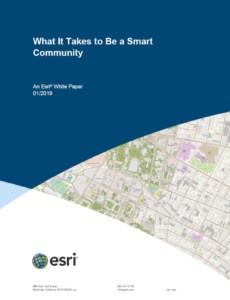What It Takes to Be a Smart Community
Change is a constant. Demographic shifts and fiscal fluctuations impact communities around the globe, prompting community leaders to adapt by changing the way they think and operate.
With the expected increases in population, cities need to adjust to accommodate the new citizens who will soon be at their doorstep. Those citizens will require energy resources, transportation, public safety, and housing. New residents will want safe, livable communities that provide satisfying work experiences. Unlike in past eras, communities planning for growth now must factor in potential impacts from climate change and more dramatic weather conditions. How will existing city infrastructure and systems address the added demands? How can new systems be most efficient and effective?
Population demographics are changing too. In many communities, the population is aging. Other communities are seeing an influx of immigrants. Shifts in demographics bring about a need for new and different services. For an aging population, more health and transportation services might be required. Immigrants are likely to need specialized education to help with language barriers. In the workforce, new demographics impact the skill sets, needs, and expectations of workers. How can local governments adjust services to support the changing needs of their population?
As governments work to provide services, citizens—especially Millennials—are demanding more transparency. Citizens want to see what’s going on inside their local government. How can government provide more transparency and be more inclusive without slowing down the delivery of services? Better yet, how can government work together with young, tech-savvy citizens to address community needs in more innovative ways?
Not only do citizens expect transparency, they also expect higher levels of customer service, on a par with what they get from businesses. Now is the age of the consumer. To remain competitive and attract highly skilled citizens and valuable businesses, communities need to evolve quickly to improve services and appeal. Local governments also need to create and foster a vibrant, inviting culture—a place where bright, young innovators will want to live and work. Small and mid-size cities are challenged to provide a desirable lifestyle and environment for economic development so they do not risk losing people to larger cities that already have so many amenities.
As if those challenges were not enough, most local governments have been through a period of reduced budgets. Insufficient funds means aging infrastructure is not updated or replaced. How can communities stay competitive, meet the needs of growing and changing populations, and accomplish more with the resources they have when it’s already a struggle to maintain existing infrastructure and levels of service? As local government budgets rebound from the economic downturn, where will the wisest investments be made?
Discover reasons to be hopeful and get a clear view thanks to our White Paper that you can download.


